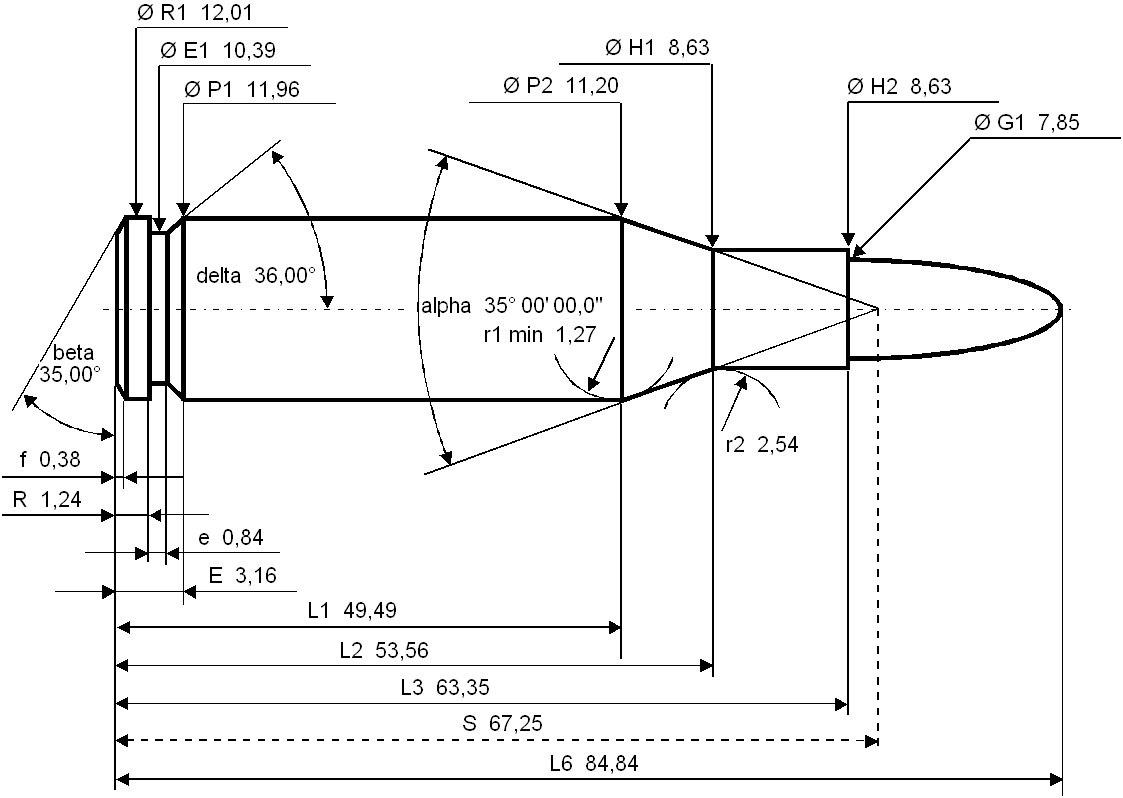
With an arsenal that currently contains everything from thermonuclear warheads to unmanned, hand-launched flying drones, it's hard to imagine an era in which the United States weren't on the cutting edge of military technology. Of course, that said, it's hard to imagine anything that was happening a whopping 110 years ago... which is, for the record, probably the last time the United States found their arsenal to be lacking.
Why 110 years ago specifically? Because 110 years ago puts us at 1903; the same year Springfield unveiled both its new M1903 Mauser-cloned rifle, and the .30-03 round they'd designed specifically for it. Utilizing a big, heavy 220-grain roundnose bullet seated atop a 45-grain powder charge, the .30-03 was, in short, a real dog of a cartridge. Requiring tremendous pressure to push the long and heavy bullet down the bore, it eroded barrels at a ridiculous pace, and put up a performance that, while superior to the even worse .30-40 Krag it was replacing, was a far cry from the capabilities of its European Spitzer-firing contemporaries.
In fact, that .30-03 was such a dismal failure of a cartridge that even the slow-moving American military's bureaucracy took only three years to shelve the cartridge, contracting Springfield once again to replace it with something capable of measuring up to the hugely more accurate European rounds. Thankfully, that process didn't take long, and Springfield took the covers off their revised cartridge in 1906. They called it, fittingly, the .30-06.
Using the same case as the original .30-03, albeit slightly shortened to better fit the much smaller 150-grain Spitzer bullet, the .30-06 benefitted from both the increased accuracy offered up by its lighter, more aerodynamic Spitzer bullet, as well as the use of a cooler and slower-burning reformulated powder that ensured better barrel life. But perhaps most important for the time, the revised design allowed Springfield to essentially rechamber the 75,000 M1903 rifles they'd already produced by then with a minimal amount of effort; requiring little more than a shortening of the barrel and a quick reaming of the chamber to position the rifling the appropriate distance from .30-06's new shorter bullet.
By the time the US military got around to replacing the .30-06 cartridge with the newer 7.62 NATO round, the venerable "aught six" had been in service for over five decades and seen extensive use in two world wars, and even after it was phased out of popular use it remained in service with specialized units, such as Vietnam-era snipers. Utilized in everything from bolt action rifles to belt-fed machine guns to, perhaps most famously, the M1 Garand semi-automatic rifle, the .30-06 held its own against all foes and proved itself a versatile, and reliable military cartridge.
Which would make it no surprise then, that when it and the rifles that fired it were phased out en masse in the late '50s and early '60s, the civilian population snapped both up in massive quantities. Quickly becoming the very foundation of the US' Civilian Marksmanship Program, the .30-06's penchant for accurate fire out to 1000 yards made it a great competitive and sporting round, while the reliable nature of its big, tapered casing made it popular amongst sportsmen looking for a round that slipped easily from magazines and into the barrels of their deer, elk, and moose rifles. Yes, that's right, the .30-06 has taken just about any and every type of game on this continent, largely as a result of the massive selection of .30-calibre bullet weights available... many of which can trace their lineage back to various military development programs.
Of course, if the .30-06 was a useful and versatile round in the '60s, it has only become moreso today, as the continued advancement of both powders and projectiles has allowed the .30-06 to remain a viable alternative to its chief competitor (and military replacement), the .308 Winchester. Remaining largely on par with the newer round in many ways, some prefer the .30-06's larger, tapered case for reasons that stretch from easier loading of magazines (due to its larger size) to the aught-six's greater degree of versatility when it comes to reloading.
But one thing's certain: while it may not be as popular over the next 107 years, the .30-06 isn't going anywhere just yet.